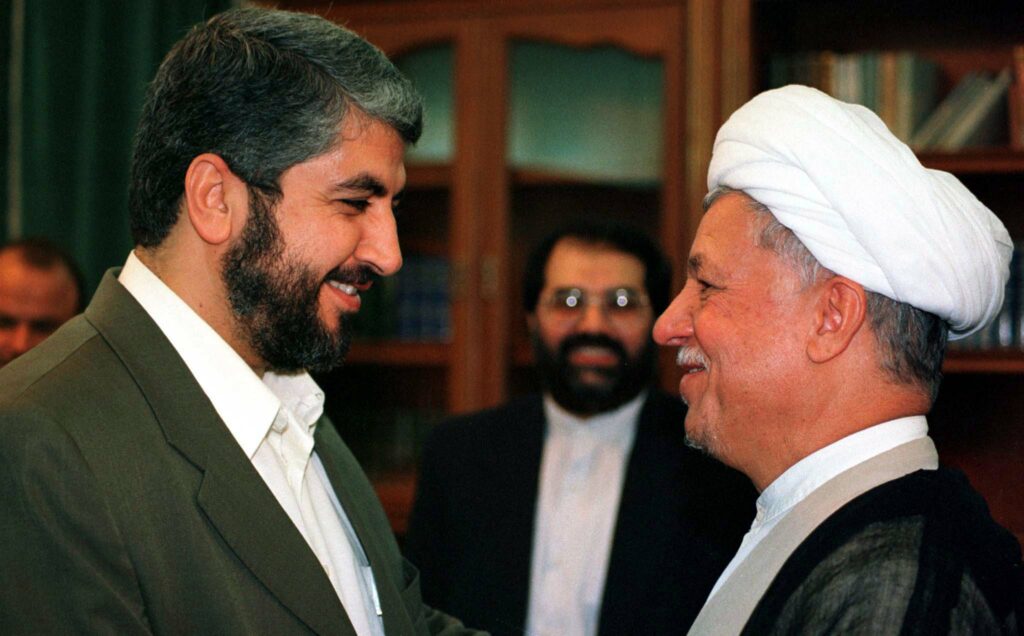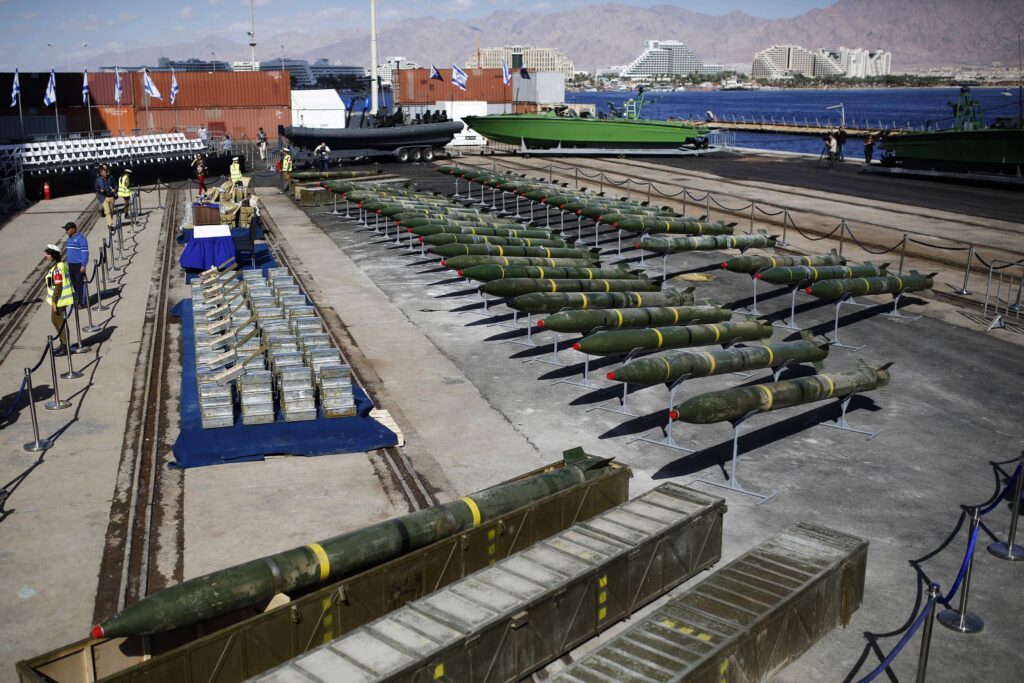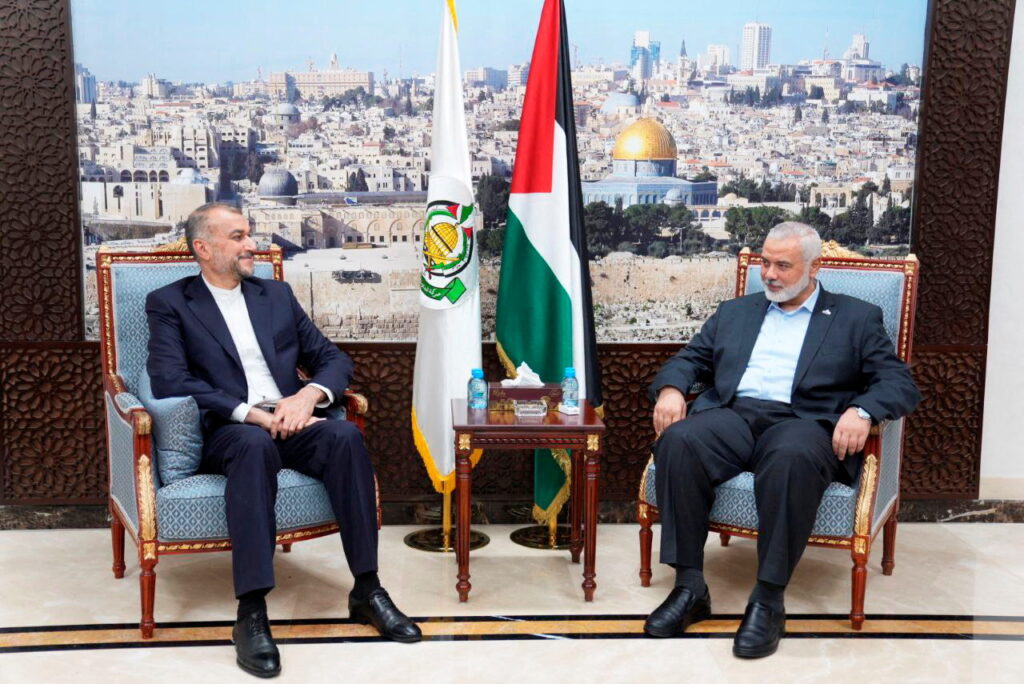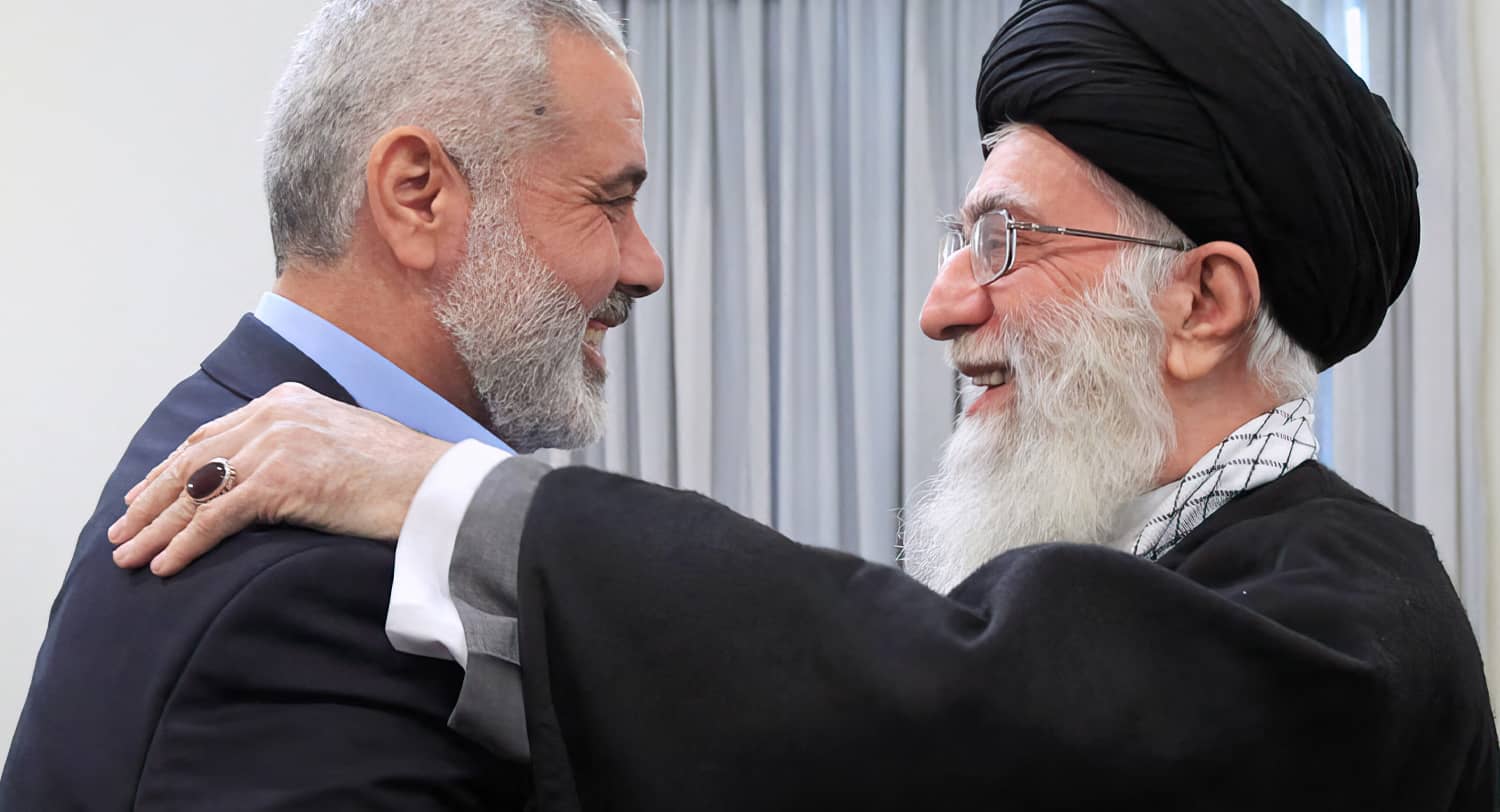In the weeks since the Hamas massacre on October 7, pundits have debated whether or not Iran helped Hamas develop the plan for the terrorist assault and if Iran had foreknowledge of the attack. Citing a Hamas source, the Wall Street Journal reported that Iran helped plot the attack and that the Islamic Revolutionary Guard Corp gave it the go-ahead at a meeting in Beirut. Another Journal report claims that in the weeks leading up to the assault, hundreds of Hamas and other Islamist militants received specialized training in Iran. Iran, for its part, denied playing any role in the attack, and US intelligence suggests that Hamas attack surprised Iran, undermining the theory it played a direct role planning or training operatives for the plot.
As early as August, Hamas deputy leader Salah Al-Arouri publicly acknowledged, “We are preparing for an all-out war, and we are discussing the prospects of this war with all relevant parties.” Such discussions surely included the IRGC and Hizbullah, with whom Hamas leaders met regularly in a “joint war room” in Beirut.
Ultimately, the details of Iran’s role in the plot itself will emerge. But this much is already clear: Iran has funded, armed, trained, and provided intelligence to Hamas for decades. Though Hamas has multiple income streams, funding from Iran has been especially important for the group’s military and terrorist structures. As US National Security Advisor Jake Sullivan concluded when asked about Iran’s role in the Hamas attack, “We have said since the beginning: Iran is complicit in this attack in a broad sense because they provided the lion’s share of the funding for the military arm of Hamas.”
Iranian Startup Funds
Since its formation in late 1987, Hamas has received and continues to receive significant financial and other support from Iran. By 1994, Palestinian author-turned-legislator Ziad Abu-Amr wrote that Iran “provides logistical support to Hamas and military training to its members,” estimating Iranian assistance to Hamas “at tens of millions of dollars.”1 Over time, this figure would rise steadily. According to a Canadian report, “in February 1999, it was reported that Palestinian police had discovered documents that attest to the transfer of $35 million to Hamas from the Iranian Intelligence Service (MOIS), money reportedly meant to finance terrorist activities against Israeli targets.”2 Iran also trained Hamas operatives to carry out attacks targeting Israel. For example, Hassan Salamah, the Hamas commander who was the mastermind behind the string of Hamas suicide bus bombings in February and March 1996, told Israeli police—and reiterated later in interview on CBS’s “60 Minutes”—that after undergoing ideological indoctrination training in Sudan he was sent to Syria and from there to Iran. Osama Hamdan, Hamas’s representative to Iran at the time, met Salamah in Tehran, after which Salamah underwent three months of military training at the hands of Iranian trainers.3

Iranian funding for Hamas increased around the time U.S.-led Coalition forces deposed Iraq’s Saddam Hussein, drying up the generous Iraqi grants to families of Palestinians killed, wounded or jailed in the course of attacking Israelis, as reported in May 2004 by the late Israeli national security reporter Zeev Schiff. “Intelligence information also suggests that Iran is passing over millions of dollars to Palestinians via Hezbollah contacts,” Schiff wrote. “Iran, in effect, is a replacement for former Iraqi leader Saddam Hussein, who subsidized families of Palestinian suicide bombers or those injured in the fighting. In the [Palestinian] territories, the funding is being managed by various Islamic welfare organizations.”4
For a time, Hamas accepted Iranian support but tried to guard its operational independence. Hamas was reluctant in its early years to accept too much money from Iran for fear of being bound to the expectations and instructions of Tehran. But the increase in Iranian funding for Hamas in May 2004 came just weeks after the assassination of Hamas leader Abdel Aziz al-Rantissi. Rantissi’s death—itself coming on the heels of the assassination of Hamas leader Sheikh Ahmed Yassin—made Hamas look weak and left the organization with no clear leadership. In Damascus, Hamas leader Khaled Mishal reportedly sought increased funding from Iran and a direct channel to the IRGC in an effort to contain the impact of the loss of Yassin and Rantisi and reinvigorate Hamas operational cells.
Iran’s provision of support to Hamas has continued to grow over time, especially after Hamas took over the Gaza Strip by force from fellow Palestinians in 2007. According to a 2010 U.S. Department of Defense report on Iran’s military power, Iran provided Hezbollah and several Palestinian terrorist groups—including Hamas—“with funding, weapons, and training to oppose Israel and disrupt the Middle East Peace Process,” noting that such assistance was at that time smuggled into Gaza through tunnels under the Philadelphi corridor (which runs along the Gaza-Egypt border). The State Department parsed no words in 2012 explaining Hamas used smuggling tunnels from Egypt and maritime smuggling routes to import weapons from Iran into Gaza. Since 2007, State noted, Hamas “dedicated the majority of its activity in Gaza to solidifying its control, hardening its defenses, building its weapons caches, tightening security, and conducting limited operations against Israeli military forces.”
Despite Syrian Civil War, Iranian Funds Flow
Relations between Hamas and Iran soured over Hamas’ decision to break with the Assad regime over the Syrian civil war and the Assad regime’s targeting of fellow Sunni Muslims. For years, ever since Jordan expelled the Hamas leadership from Amman, Jordan, in 1999, Hamas had maintained the headquarters of its external leadership in Damascus. But in January 2012, Hamas leader Khaled Mishal abandoned the group’s Damascus base. By February 2012, Hamas deputy leader Mousa Abu Marzouk, then located in Egypt, commented that “The Iranians are not happy with our position on Syria, and when they are not happy, they don’t deal with you in the same old way.”
And yet, Iranian funding for Hamas never completely stopped. While the group’s rift with Tehran affected funding for Hamas’ political activities, Iran continued to fund the group’s military activities. Moreover, by early 2014, relations between Hamas and Iran started to get back on track.
In 2014, when Hamas fought a rocket war with Israel and demonstrated to Iran that it could effectively target Israel, Iran took notice. According to the Congressional Research Service, “Since the 2014 Hamas-Israel conflict, Iran has apparently sought to rebuild the relationship with Hamas by providing missile technology that Hamas used to construct its own rockets and by helping it rebuild tunnels destroyed in the conflict with Israel.”
Such conclusions are supported by evidence that became public in several prominent cases. For instance on March 5, 2014, the Israeli Navy intercepted the Klos-C, a commercial ship flying a Panamanian flag, in the Red Sea off the Eritrean coast. According to the Israeli Ministry of Foreign Affairs, when the Israeli Navy boarded the ship and examined its cargo, they found a variety of weapons, including: 40 M-302 surface to surface rockets manufactured in Syria, with a range of 90-200 km; 181 122mm mortar shells; and 400,000 rounds of assault rifle ammunition.

In a sign that Iranian funding to Hamas was back in full swing, in September 2015, the US Treasury Department designated a dual British-Jordanian citizen based in Saudi Arabia who was coordinating the transfer of tens of millions of dollars from Iran to Saudi Arabia to fund Hamas’ Qassam Brigades and Hamas activities in Gaza.
From 2012 through 2016, Hamas finance operatives in Lebanon helped facilitate the flow of funds from Iran’s IRGC, through Lebanese Hezbollah, to Hamas. Consider the case of Beirut-based Mohammad Sarur, who is tied to both Hezbollah and Hamas. According to the U.S. Treasury Department, “Sarur served as a middle-man between the IRGC-QF and Hamas and worked with Hezbollah. operatives to ensure funds were provided to [Hamas’] Izz-Al-Din Al-Qassam Brigades.
By August 2017, newly elected Hamas leader in Gaza, Yahye Sinwar, stated that Iran was once more “the largest backer financially and militarily” of the Hamas military wing.
Shortly thereafter, authorities noticed significantly ramped up Iranian efforts to fund the group. For example, in November 2018, the Treasury Department uncovered a complex “oil-for-terror” network that benefited Hamas, among others. The scheme involved the shipment of Iranian oil, with the help of Iranian operatives and Russian companies, to the Assad regime in Syria, who would then hand over the hundreds of millions of U.S. dollars in profits to the IRGC. From there, the IRGC would distribute the funds to two of Iran’s most important proxies – Hezbollah and Hamas.
In June 2022, Hamas and Syria announced their decision to restore ties.

Iran’s Ongoing Support for Hamas
Today, US and Israeli officials estimate that Iran provides Hamas at least $70m-$100m a year. Hamas leader Ismail Haniyeh claimed in a 2022 interview with Al Jazeera that his group receives $70 million a year from Iran.
In October 2023, following the Hamas invasion of southern Israel, the U.S. Treasury Department designated Muhammad Nasrallah, a veteran Hamas operative based in Qatar with close ties to Iran who was involved in the transfer of tens of millions of dollars to Hamas, including the Qassam Brigades.
Iranian funding of Hamas has over time sustained the group and built up the group’s terrorist capabilities. Iran’s terrorist training programs, and its consistent effort to arm Hamas over the years, are the reason Hamas has been able to carry out attacks targeting Israel including the October 7 massacre.
For decades, Iran, a US-designated state sponsor of terrorism, has provided a wide range of material support to Hamas, without which Hamas could never have become the capable and deadly terrorist organization it is today. Jake Sullivan is right. “They have provided training, they have provided capabilities.” Tehran played a critical role in creating the monster that is Hamas, which is why Iran shares the blame and responsibility for the brutal attack.
- Ziad Abu-Amr, Islamic Fundamentalism in the West Bank and Gaza: Muslim Brotherhood and Islamic Jihad (Bloomington, IN: Indiana University Press, 1994), p. 88
↩︎ - “Terrorist Group Profiler,” Canadian Secret Intelligence Service (CSIS), June 2002, Author’s personal files; See also Stewart Bell, “Hamas May Have Chemical Weapons: CSIS Report Says Terror Group May be Experimenting,” National Post (Canada), December 10, 2003 ↩︎
- Transcript of “Suicide Bomber: The Planning of the Bloodiest Suicide Bombing Campaign in Israel’s History,” CBS 60 Minutes, October 5, 1997. ↩︎
- Zeev Schiff, “Iran and Hezbollah Trying to Undermine Renewed Peace Efforts,” Haaretz, May 12, 2004. ↩︎

